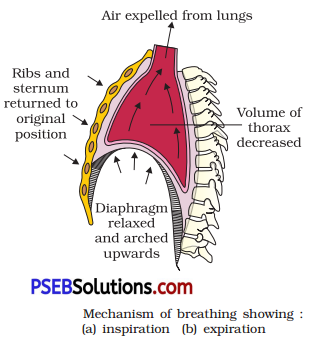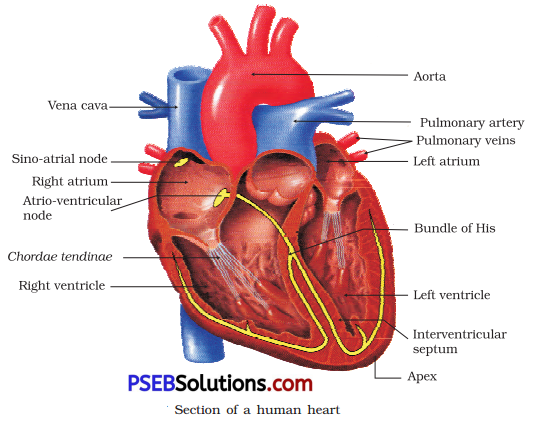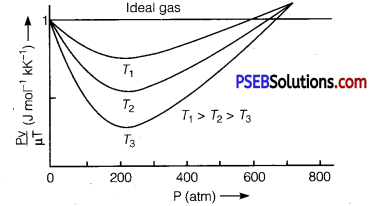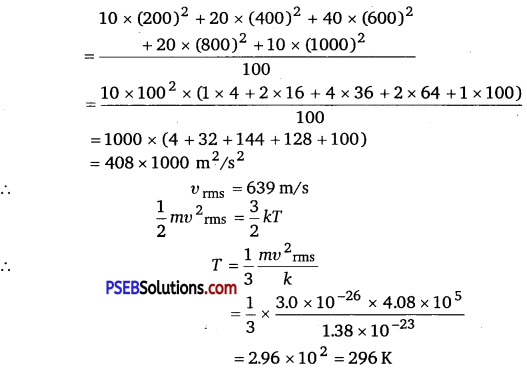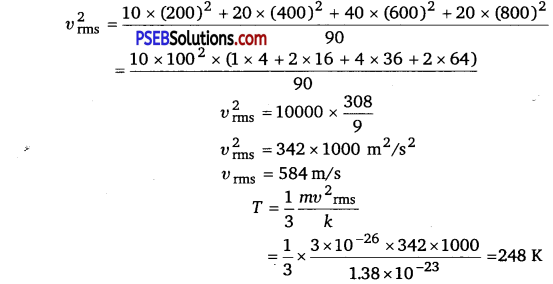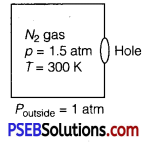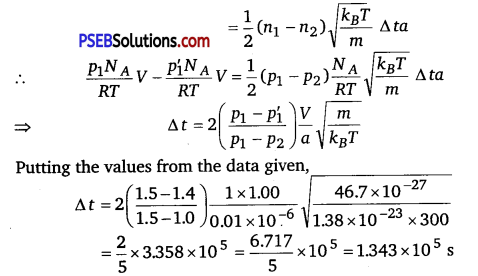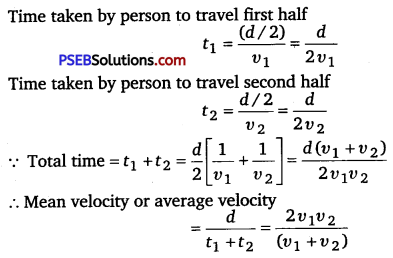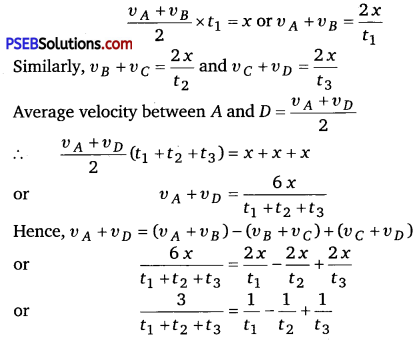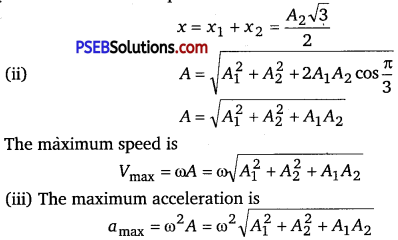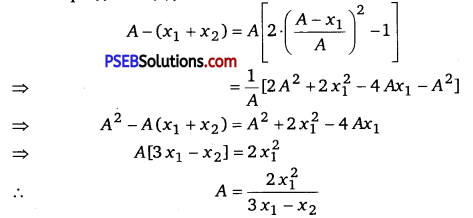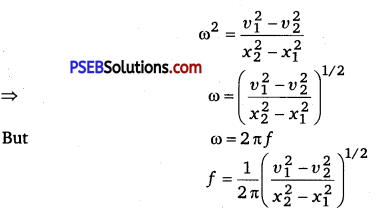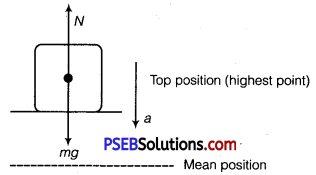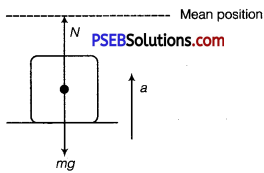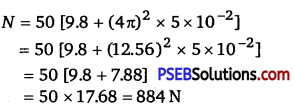Punjab State Board PSEB 11th Class Biology Important Questions Chapter 7 Structural Organisation in Animals Important Questions and Answers.
PSEB 11th Class Biology Important Questions Chapter 7 Structural Organisation in Animals
Very short answer type questions
Question 1.
A muscular fibre tapers at both the ends and does not show striations. Name the muscle fibre. [NCERT Exemplar]
Answer:
Smooth or non-striated muscle fibre.
Question 2.
Name few called the specialised connective tissues?
Answer:
Bones, cartilage and blood are the special types of connective tissues.
Question 3.
How does a gap junction facilitate the intercellular communication? [NCERT Exemplar]
Answer:
A gap junction facilitates the cells to communicate with each other by connecting the cvtoplasm of the adjacent cells.
![]()
Question 4.
Which tissue forms the ligaments? What is their function?
Answer:
Ligaments are formed of yellow elastic connective tissue. The ligaments join the bones together.
Question 5.
On which segment of the body, male and female genital apertures are present in earthworm?
Answer:
Male – 18th segment; Female – 14th segment.
Question 6.
Why the body segmentation in earthworm is called metameric segmentation ?
Answer:
In metameric segmentation, the external segmentation corresponds to the internal segmentation of the body.
Question 7.
In earthworm, from which segment intestine starts and where it ends?
Answer:
In earthworm, intestine starts from the 15th segment onwards and continues till the last segment.
Question 8.
Where the sclerites are present in cockroach? [NCERT Exemplar]
Answer:
In the exoskeleton all over the body.
![]()
Question 9.
Which month part of cockroach is comparable to our tongue? [NCERT Exemplar]
Ans.
Hypopharynx.
Question 10.
Name the upper lip and lower lip of the cockroach.
Answer:
Upper lip – Labrum
Lower lip – Labium
Question 11.
Why the blood of cockroach is not responsible for transporting respiratory gases?
Answer:
Because the respiratory pigment is absent in their blood.
Question 12.
List the parts of blood vascular system of cockroach.
Answer:
Haemocoel, heart and blood.
Short answer type questions
Question 1.
Answer:
| Smooth Muscle | Skeletal Muscle | Cardiac Muscle |
| 1. Spindle shaped cells | Striated unbranched cells | Striated branched cells |
| 2. Found in muscles of internal organs | Found | Found in the heart |
| 3. Control involuntary actions | Control voluntary actions | Control heart’s pumping which is involuntary |
![]()
Question 2.
What do you understand by special junctions between cells? Which type of special junction are found in epithelial tissues?
Answer:
All cells are held together with intercellular material. These materials form junctions between cells.
There are three types of cell junctions found in epithelial tissue.
(a) Tight Junctions: These junctions help in stopping leakage of substances across a tissue.
(b) Adhering Junctions: These junctions keep neighbouring cells together.
(c) Gap Junctions: These junctions connect cytoplasm of adhering cells, and facilitate exchange of materials.
Question 3.
Explain fertilization and development in Pheretima.
Answer:
Fertilization and Development in Pheretima
- A mutual exchange of sperm occurs between two worms during mating. One worm has to find another worm and they mate juxtaposing opposite gonadal openings exchanging packets of sperms called spermatophores.
- Mature sperm and egg cells and nutritive fluid are deposited in cocoons produced by the gland cells of clitellum. Fertilisation and development occur within the cocoons which are deposited in soil.
- The cocoon holds the worm embryos. After about 3 weeks each cocoon produces two to twenty baby wopns with an average of four. Earthworms development is direct, i.e., there is no larva formed.
Question 4.
Describe mouth parts of the cockroach. ,
Answer:
Mouth Parts of Cockroach: Anterior end of the head bears appendages forming biting and chewing type of mouth parts. The mouth ‘ parts consist of following structures:
(a) Labrum (upper lip),
(b) A pair of mandibles,
(c) A pair of maxillae and
(d) Labium (lower lip).
Apart from these a median flexible lobe, acting as tongue (hypopharynx), lies within the cavity enclosed by the mouth parts.
Question 5.
Explain in brief the nervous system of cockroach.
Answer:
Nervous System of Cockroach
- The nervous system of cockroach consists of a series of fused, segmentally arranged ganglia joined by paired longitudinal connectives on the ventral side.
- Three ganglia lie in the thorax, and six in the abdomen. The nervous system of cockroach is spread throughout the body.
The head holds a bit of a nervous system while the rest is situated along the ventral (belly-side) part of its body.
![]()
Question 6.
Explain digestion in frogs.
Answer:
Digestion in Frog
- In the stomach digestion of food takes place by the action of HCl and gastric juices secreted from the walls of the stomach.
- Partially digested food called chyme is passed from stomach to the first part of the intestine, the duodenum. The duodenum receives bile from gall bladder and pancreatic juices from the pancreas through a common bile duct.
- Bile emulsifies fat and pancreatic juices digest carbohydrates and proteins. Final digestion takes place in the intestine.
- Digested food is absorbed by the numerous finger-like folds in the inner wall of intestine called villi and microvilli.
Question 7.
Explain in brief the central nervous system of frog.
Answer:
Central Nervous System of Frog ,
- Brain is enclosed in a bony structure called brain box or skull (cranium).
- The brain is divided into fore-brain, mid-brain and hind-brain.
- Forebrain includes olfactory lobes, paired cerebral hemispheres and unpaired diencephalon.
- The midbrain is characterised by a pair of optic lobes.
- Hind-brain consists of cerebellum and medulla oblongata.
- The medulla oblongata passes out through the foramen magnum and continues into spinal cord, which is enclosed in the vertebral column.
- There are ten pairs of cranial nerves arising from the brain.
Question 8.
How do different senses work in frog? Explain in brief. ,
Answer:
Sense Organs in Frog : Frog has different types of sense organs which are as follows:
(a) Sensory papillae or organs of touch,
(b) Taste buds.
(c) Nasal epithelium for the sense of smell,
(d) Eyes for vision and
(e) Tympanum ‘with internal ears for hearing.
Out of these, eyes and internal ears are well-organised structures and the rest are cellular aggregations around nerve endings. Eyes in a frog are a pair of spherical structures situated in the orbit in skull. These are simple eyes. External ear is absent in frogs and only tympanum can be seen externally. The ear is an organ of hearing as well as balancing.
Long answer type questions
Question 1.
Which features distinguish blood from lymph?
Answer:
Differences between blood and lymph are given below :
| Blood | Lymph |
| 1. It contains plasma, erythrocytes, leucocytes and platelets. | It contains plasma and leucocytes. |
| 2. The presence of haemoglobin imparts red colour to it. | It is colourless as haemoglobin is absent. |
| 3. Its plasma contains more protein, calcium and phosphrous as compared to lymph. | Its plasma has fewer protein and less calcium and phosphorus than blood. |
| 4. Contains moderate amount of CO2 and other metabolic waste. | Contains excessive amount of CO2 and other metabolic waste. |
![]()
Question 2.
In which segment does the following structures lies in the earthworm’s body?
(i) Spermathecae
(ii) Pharynx
(iii) Gizzard
(iv) Intestine
(v) Septal nephridia
(vi) Ovary
(vii) Testes
(viii) Typhlosole
(ix) Lateral heart
(x) Pharyngeal nephridia
Answer:
(i) Spermathecae – 6th, 7th, 8th, 9th
(ii) Pharynx – 4th
(iii) Gizzard – 8th
(iv) Intestine – 15th to last
(v) Septal nephridia – 15th to last
(vi) Ovary – 13th
(vii) Testes – 10th, 11th
(viii) Typhlosole – 26th-95th
(ix) Lateral heart – 7th, 9th
(x) Pharyngeal nephridia – 4th-6th
